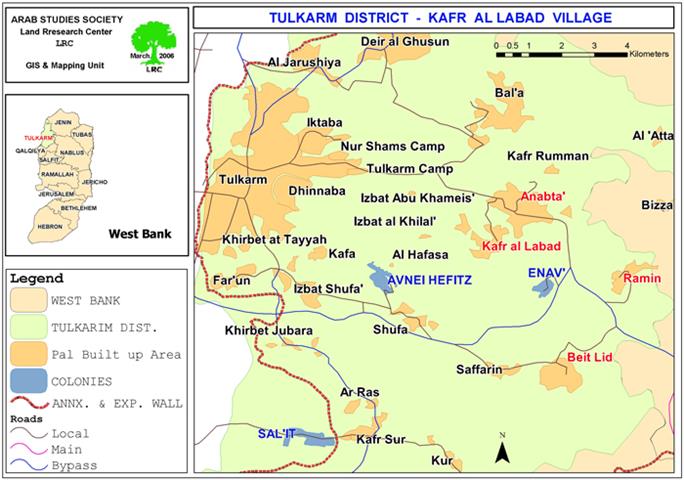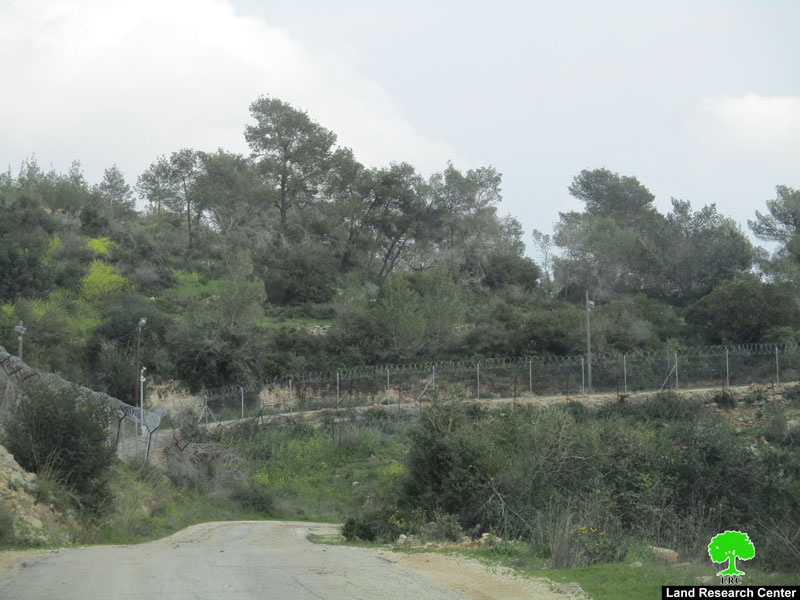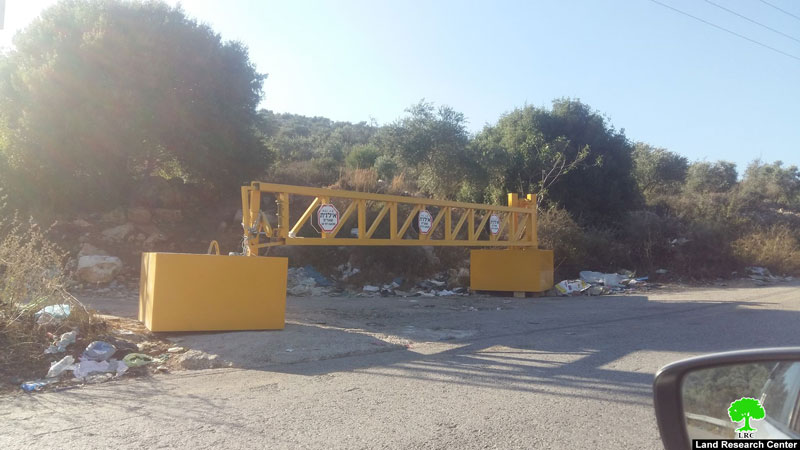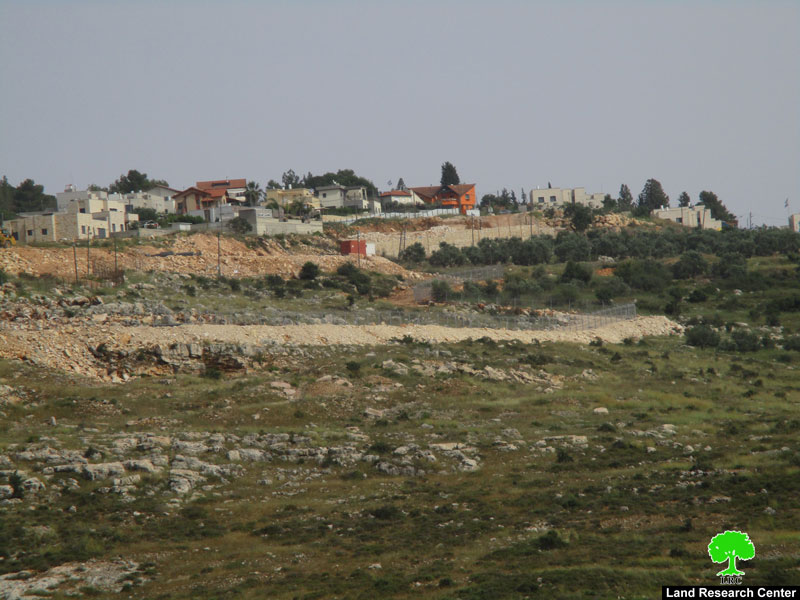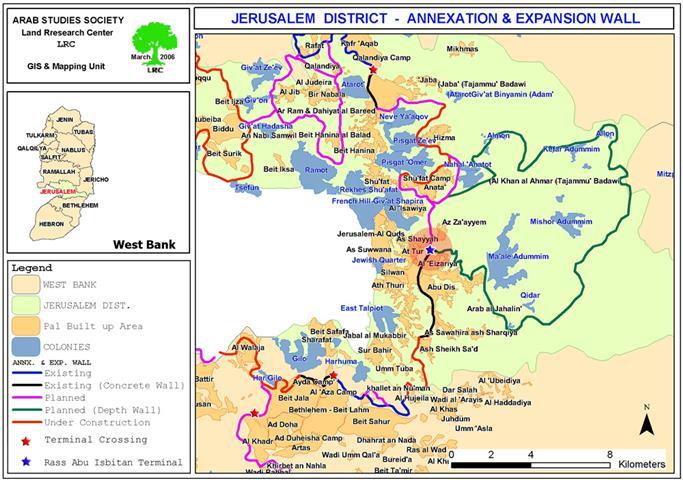The Israeli occupation forces started on March 2nd, 2006, to destroy and uproot thousands of long lived olive trees in preparation for the establishment of the Annexation and Expansion Wall around the settlement of Enav in Tulkarem governorate. The target trees belong to people from the villages of Kafr Al Labad and Beit Lid in Tulkarem district. See Map 1

(Map 1: The villages of Kafr Al Labad and Bit lid with
Enav settlement in between), Map prepared by LRC
In April last year, the Israeli military issued decree number T/68/05 stating the confiscation of 134.7 dunums of lands from the above villages for the purpose of building the Wall around Enav settlement as a preamble for total annexation to Israel.
Apart form the 134.7 dunums mentioned in the decree and expected to be destroyed under the route of the Wall, the following agricultural areas will be separated behind the Wall and Palestinian access to them limited or denied.
1. 600 dunums north west of Beit Lid;
2. 500 dunums south of Kafr al Labad;
The villages' local councils had objected the Israeli military decree on time but their objection was refused by the Israeli high court who decided in November, 2005, that the Wall would be built as a protection for Israeli people.
Location, population and area
The village of Kafr Alabad and Beit Lid are located to the south east of Tulkarem city. Kafr Al Labad's total surface area is 11917 dunums, 640 of which are built up area. Its population is 3500. Beit Lid's total land area is 17411 dunums of which 928 are built up area. Its population toll is 4700.
The settlement of Enav was established in 1981 over lands confiscated from the above mentioned three villages. In 2004, Enav had the population of 468 settlers (source- Foundation For Middle East Peace).
Actual work begins
On March 2nd, 2006, a group of Israeli civilians protected by the Israeli army started to cut off the branches of hundreds of olive trees located in the north and west of Enav settlement in a preliminary step towards uprooting and reallocating these trees. During the period of three days, the total of 1000 olive trees was trimmed around the settlement of Enav. The trimmed trees belong to the following farmers:
|
No. |
Owner's name |
Place of residency |
|
1 |
Sa'id Hasan Jab'iti |
Kafr Al Labad |
|
2 |
Imran Abu Baker |
Kafr Al Labad |
|
3 |
Attiya As Shayeb |
Kafr Al Labad4 |
|
4 |
Yusif Al 'Arif |
Beit Lid |
|
5 |
Abu At Taher |
Beit Lid |

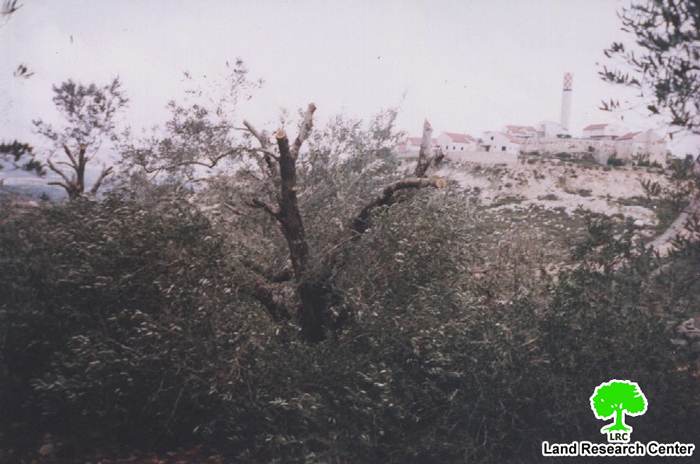
(Photo 1 & Photo 2:Kafr Al Labad- Tulkarem: Enav settlement
with trimmed olive trees in the center
Until the time this report was prepared the Israeli bulldozers were busy destroying the olive orchards, uprooting trees and loading them into Israeli trucks for transfer to unknown locations in an obvious act of theft of Palestinian assets. In the midst of this wide scale act of damage and robbery no Palestinian land owners or farmers are allowed to approach the scene under the pretext of safeguarding the Israeli saboteurs.
The construction of this Wall barrier will, finally, lead to the uprooting of at least 3000 long-lived olive trees under the route of the fence.
The settlement of Enav is located between the villages of Kafr Al Labad and Beit Lid; therefore, the under construction Wall will cut any geographical continuity between them (see the attached map). More seriously, the main Tulkarem- Nalbus road will be cut off by the Wall, hence, separating between the city of Tulkarem and its eastern enviroans, including the whole governorate of Nublus.). More seriously, the main Tulkarem- Nalbus road will be cut off by the Wall, hence, separating between the city of Tulkarem and its eastern enviroans, including the whole governorate of Nublus.

Photo 3: Kafr Al Labad- Tulkarem:
Another long lived olive tree after trimming)
Anti Wall march
On March 6th, 2006, a huge anti Wall march was organized in Tulkarem city with the aim of reaching the affected villages of Kafr Al Labad and Beit Lid. The march was called for by the Anti Wall Popular Committee, the International Solidarity Movement and some national forces. When the marchers arrived at the checkpoints of Enab and Jubara on their way to the target areas they were faced with Israeli soldiers who used excessive force to disperse them using live and rubber bullets and tear gas bombs.
Prepared by
The Land Research Center
LRC


